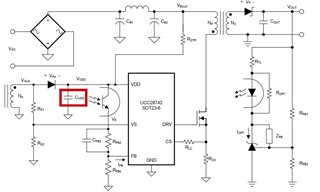Other Parts Discussed in Thread: UCC28742
Hi Teams
I am seeking a 85~230AC to 24V/75W solution for customer. And both UCC28740 and UCC28742 is my candidate.
- My first questions is which part more sutiable for highe power level flyback and why?
I noticed the major difference between these two device is pacakge and HV startup pin.
- Could you explain more about the advantage of HV startup pin compara to tradistional start-up resistor type like UCC28740?
- UCC28740 have lower no load power consumption. I want to know what lead to such difference?
Thanks in advance.




